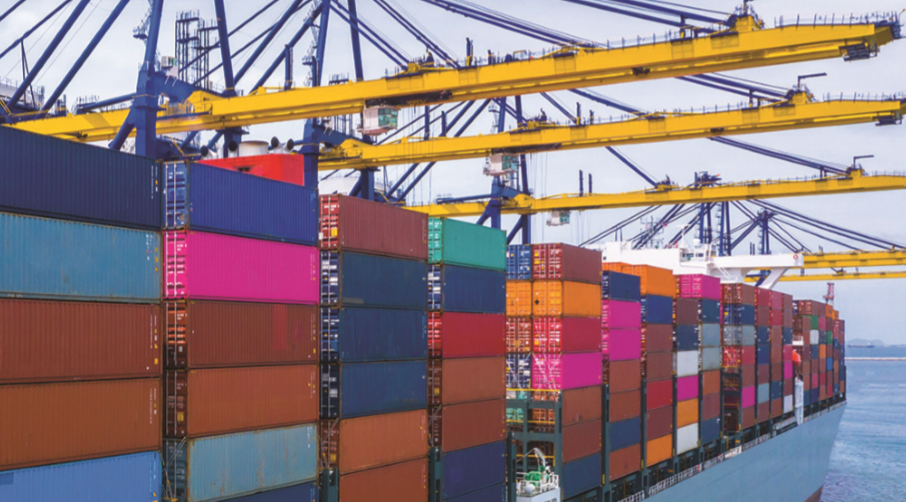Ploutos Wealth Management offers comprehensive Portfolio Management Services in Rotorua and Bay of Plenty aimed at helping you achieve your financial goals with confidence. Our skilled team works closely with you to understand your goals, risk tolerance and investment preferences to create a customized portfolio that reflects your specific needs. Our approach to wealth management is tailored to meet your specific goals, whether that be steady growth, income generation or protecting your assets over the long term. We combine intelligent asset allocation and rigorous monitoring to increase profits while mitigating risks. Understanding market movements and economic drivers enables us to adapt our client's portfolios to respond effectively to developments. Ploutos Wealth Management is characterised by its emphasis on personal attention and meticulous detail, ensuring your investments are managed by experienced professionals. You can trust us to be dedicated, knowledgeable, results-focused and expertly manage your financial activities.

One relatively recent development has been the emergence of an evolving energy crisis across both Europe and China, resulting in record price increases in commodities used to generate electricity and heat; namely oil, natural gas and coal.
About 40% of the UK's energy comes from renewable sources, but the reliability of a renewable supply can be problematic. With low winds across Europe and the UK in their northern summer, wind power generation waned, forcing these regions to turn to gas and coal. UK petrol prices have also hit an eight-year high with widespread reports of petrol stations running dry.
In a similar vein, demand for natural gas has been surging in China, as low water levels restricted hydropower generation and severe coal shortages affected electricity supply. A combination of coal shortages, toughening emissions standards and strong demand from manufacturers and industry, pushed coal prices to record highs and triggered widespread curbs on usage.
The chequered pathway back to normal
With much of the developed world has abandoned strategies designed to eliminate Covid-19 and instead opting to “live with it”, there has been a continued reorientation underway globally whereby individuals, businesses and governments are exploring pathways back towards normal, or "post- Covid normal". Increasingly, this is being reflected in many countries through relaxation in previous social and business restrictions, and in some cases travel restrictions.
Supply chain breakdown
During the first half of 2020, when much of the global economy went into lockdown, demand for most consumer goods came to a near standstill. In short order, manufacturing capacity was cut, sailings by container ships were cancelled, and workers everywhere were furloughed or displaced. By the second half of 2020, following massive fiscal and monetary stimulus by most central banks, consumers started flooding online retailers with new orders. Manufacturing restarted and international trade resumed. The global economic switch was suddenly turned back on.
Inflation – temporary or permanent?
And that leads to the question that policymakers and market participants are now grappling with – are these price rises likely to be temporary or something more permanent? Inflation measures have certainly gone up but that only reflects what we already know – that many prices have already increased. It doesn’t tell us how persistent those price rises may prove to be. In fact, if recent price rises can largely be attributed to supply chain issues, which are likely to be remedied in time, then the idea that the current inflation spike will only be temporary may have more credence.
Interest rate arm wrestle
Although many of the current inflationary forces are still seen as transitory, persistent disruptions in supply chains and surging energy costs have increased fears that inflation might last longer than anticipated. This added impetus to the increase in global yields from mid-September. Weighing into this debate, Federal Reserve Chairman Jerome Powell said they anticipate the current surge in prices, due primarily to supply-chain bottlenecks, continuing into next year before fading. He said the Federal Reserve doesn’t expect the current inflation spike to “lead to a new inflation regime, in which inflation remains high year after year.”
China struggles
Outside of the major markets, China also hit the headlines for a range of reasons recently, not least of which being the relatively poor performance of the Chinese sharemarket last quarter. Chinese shares have always been subject to something of a “China discount” in respect of the perceived additional political risk, but investors appeared to be surprised by the speed and swiftness with which large parts of the economy have been targeted for new regulations.
A global reopening with increasing vaccination rates may also help reduce inflation pressures as the business community consistently gets back to work. Earnings volatility should reduce as supply chain pressures ease and businesses incur less of the stop/ start disruptions they have experienced with respect to operations and earnings. And while global interest rates may have commenced an upward path, they are likely to remain highly attractive (by historical standards) for quite some time, providing significant ongoing support to share markets.

Let’s say someone asks you a benign question such as, “Are there more or less than 100 countries in Africa?” What would your answer be? Most people would say, “less,” and they’d be right. You are then asked a follow-up question, “So how many countries are in Africa?” Think about it for a moment and remember your guess. The answer will be revealed at the end of this article!
Two well-known psychologists, Amos Tversky and Nobel Prize winner Daniel Kahneman (Tversky would also have won had he lived) showed this in a paper titled, “Judgment Under Uncertainty: Heuristics and Biases¹”. The paper was published in the journal Science and showed that even random information, such as the last two digits of your phone number or the outcome of spinning a wheel, could affect someone’s guess as to how many countries are in Africa.
The Decision Lab⁴ provides a useful example of anchoring bias in real life, “Imagine you’re out shopping for a present for a friend. You find a pair of earrings that you know they’d love, but they cost $100, way more than you budgeted for. After putting the expensive earrings back, you find a necklace for $75, still more than your budget, but hey, it’s cheaper than the earrings!” There are plenty of non-financial examples as well.
One study showed that the number of food participants in the study wanted to eat was influenced by whether they first imagined being served a large or small portion.⁵ Many of us have similar stories. While travelling in the Middle East (when travel was a thing) a colleague saw an artefact he liked and asked the boy tending the shop what it cost. The answer was absurdly high. When he turned to walk away, the boy called out with a steep discount. The haggling began and the man walked away with the artefact thinking he had negotiated a discount in the order of 75%. He was dismayed to find later that he paid to double its true price. He bought into the high anchor.
A common example is an investor who has a large amount of money sitting in the UK which they want to spend or bring over to New Zealand. They are hesitant to exchange the money at the moment because the exchange rate is close to 2:1 ($2 NZD for £1). They remember the 3:1 days and want to wait until those days come back.
One method that could work was outlined in a 20-year-old study entitled, “Overcoming the inevitable anchoring effect: Considering the opposite compensates for selected accessibility”.⁷ In this study, the authors show that individuals who were car experts were asked if the price of a car was too high or too low (the initial price of the car was the anchor). They were then asked to provide a better estimate. However, before they gave their estimate, they had to articulate their argument against the anchor price. Those that did were less susceptible to the anchor than those that gave no counterargument.
The most common method to overcome the effect of anchoring is experience. Experience provides some counter to an anchoring bias. For example, if we knew from experience what artefacts in Middle Eastern shops should cost, we’d be less likely to overpay. In that example, it was inexperience that allowed the anchor to be so influential
While we’re not saying that we aren’t influenced by anchoring, years of experience teaches you practical wisdom, caution, processes and governance which provide the means for careful and thoughtful choices. Speaking of experience, some of you probably knew from experience that there are exactly 54 countries in Africa. If you didn’t, anchoring suggests more of you guessed high than low. Either way, knowledge may help overcome the anchoring challenge and if it doesn’t, it may win you a point on a future pub quiz.